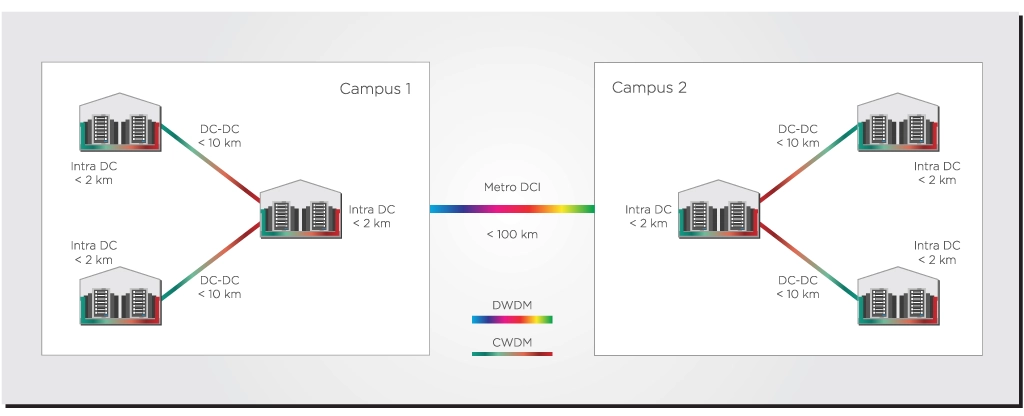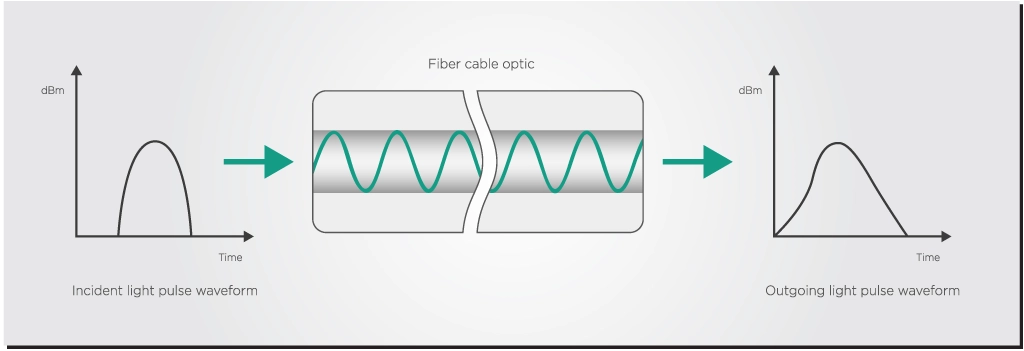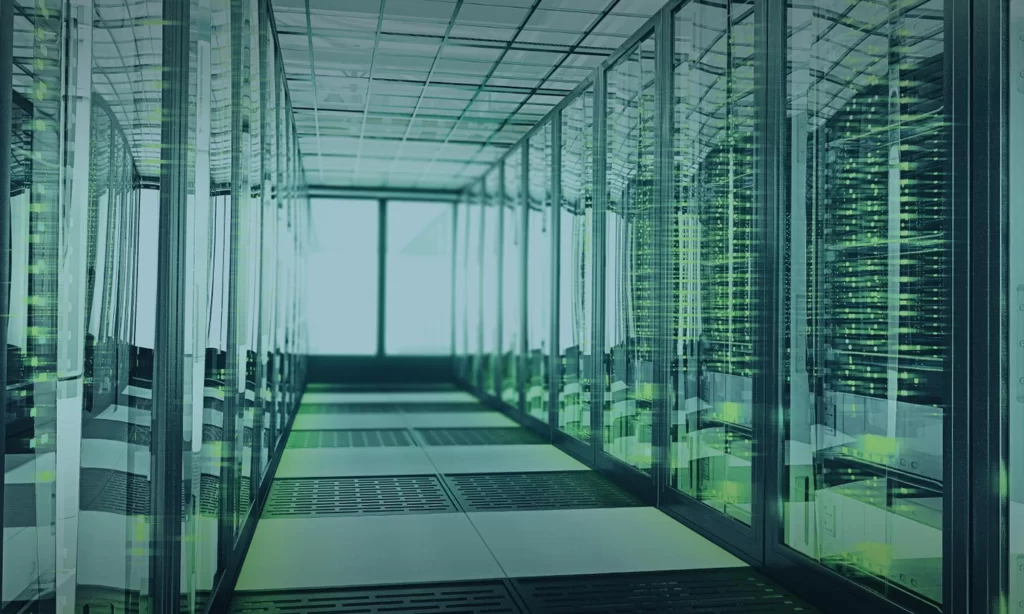Coherent Lite and The Future Inside the Data Center
In the dynamic landscape of data centers, the demand for greater bandwidth and extended reach is rapidly increasing. As shown in the figure below, we can think about three categories of data center interconnects based on their reach
- Intra-data center interconnects (< 2km)
- Campus data center interconnects (<10km)
- Metro data center interconnects (<100km)

Coherent optical technology has already established itself as the go-to solution for interconnecting data centers over long distances in metro areas.
However, within the confines of data centers themselves, intensity-modulated direct detect (IM-DD) technology remains dominant. Recognizing the limitations of IM-DD in meeting evolving requirements, the industry is exploring “Coherent Lite” solutions—a simplified implementation of coherent technology designed specifically for shorter-reach data center connections.
This article delves into the concept of coherent lite technology and its potential to address the escalating bandwidth demands within data centers.
Reducing Dispersion Compensation
The quality of the light signal degrades when traveling through an optical fiber by a process called dispersion. The same phenomenon happens when a prism splits white light into several colors. The fiber also adds other distortions due to nonlinear optical effects. These effects get worse as the input power of the light signal increases, leading to a trade-off. You might want more power to transmit over longer distances, but the nonlinear distortions also become larger, which beats the point of using more power. The DSP performs several operations on the light signal that try to offset these dispersion and nonlinear distortions.

However, shorter-reach connections require less dispersion compensation, presenting an opportunity to streamline the implementation of coherent solutions. Coherent lite implementations can reduce the use of dispersion compensation blocks. This significantly lowers system power consumption.
The Trade-Offs Between Fixed and Tunable Lasers
Coherent lite solutions also aim to replace tunable lasers with fixed lasers to reduce costs. The use of fixed lasers eliminates the need for wavelength tuning and associated control circuitry and algorithms, simplifying the implementation and reducing operational complexities.
While fixed lasers offer significant advantages, tunable lasers will push to remain competitive. As we described in a previous article, advances in tunable laser technology aim to further reduce package footprints and leverage electronic ecosystems to reduce cost. Such developments will allow tunable lasers to keep pace with the demands of coherent lite solutions, ensuring a viable alternative for shorter-reach data center connections.

Scaling Data Center Links
The increasing length and bandwidth of links within data centers is increasingly calling for the use of coherent technology. As bandwidth scales to 1.6 and 3.2 terabits, traditional direct detect technology faces challenges in keeping up with the growing distances. Intra data center links that were previously limited to 2 kilometers are now extending to 5 or even 10 kilometers, demanding more robust and efficient transmission technologies.
In this context, coherent lite technology provides an attractive middle ground for enabling extended-reach connections within data centers. By leveraging some aspects of coherent solutions, coherent lite technologies facilitate the reliable and efficient transport of data over longer distances.
Takeaways
As data centers evolve to accommodate escalating bandwidth demands, coherent lite technology emerges as a promising solution for communication links within these facilities. By reducing dispersion compensation, simplifying their laser setups, and enabling extended-reach transmission, coherent lite solutions address the limitations of traditional direct detect technology. These advancements pave the way for enhanced performance, and seamless scalability within data center environments.
